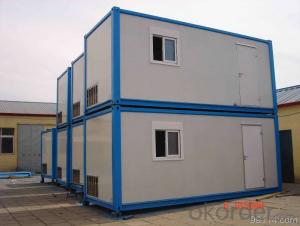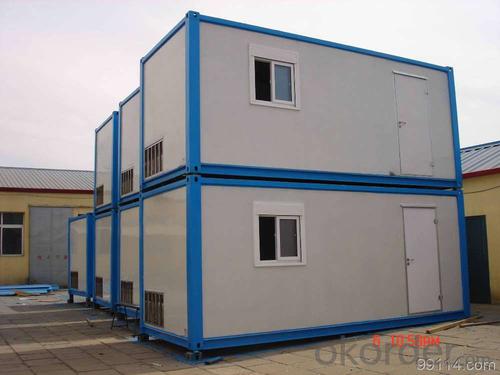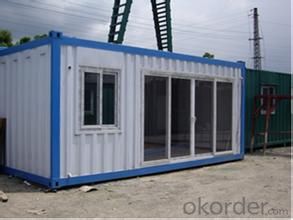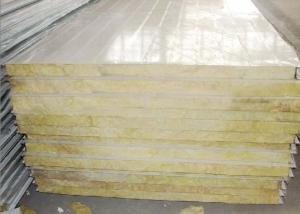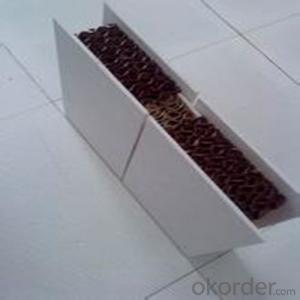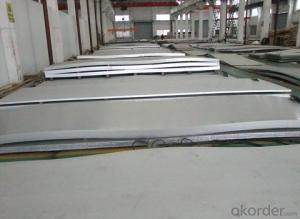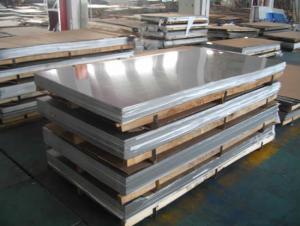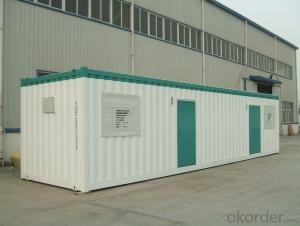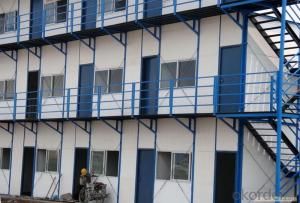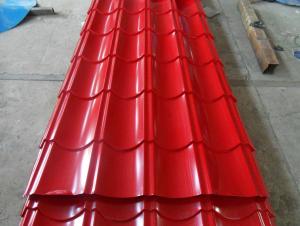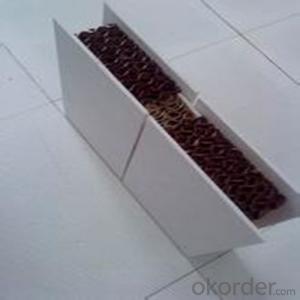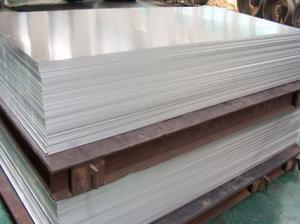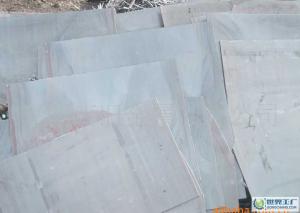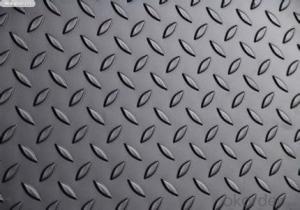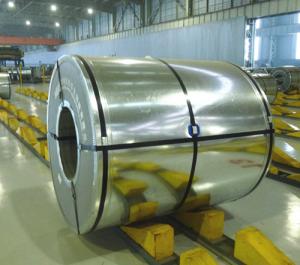Metal Sandwich Panel Container House with Best Quality
- Loading Port:
- Tianjin
- Payment Terms:
- TT or LC
- Min Order Qty:
- 4 set
- Supply Capability:
- 1000 set/month
OKorder Service Pledge
OKorder Financial Service
You Might Also Like
Presentation:
Container Houses, as a covinient way to live, have been widely used around the world.
Specifications
1.Qualified material
2.Flexible design
3.Fast installation
4.Reuse for numerous times
5.Convenient package for shipping
The details as follows:
Item
Name
Specification
Dimension
Length
Exterior/interior: 5.950m/5.710m
Width
Exterior/interior: 2.310m/2.060m
Height
Exterior/interior: 2.740m/2.400m
Weight
1750kg per unit
Standard accessory
Floor
Orlop wainscot: 0.4mm galvanized steel sheet.
Structure: channel steel keel, Material:Q235.
The girder of the keel are welded by two ends.
Insulation fitting: EPS in a thickness of 30mm above the galvanized steel sheet.
Waterproof bamboo-glue board in a thickness of 15mm for the bathroom and Plywood board in a thickness of 15mm for other rooms
PVC floor sheet in a thickness of 1.5mm on the topside
Permitted loading: 2.0KN/m2, Coefficient of thermal conductivity: K=1.1W/ m²K
Roof
Structure: box girder 120*80,Material:Q235
The topside wainscot: 0.5mm galvanized steel sheet.
The purlins of the keel are welded by two ends.
Insulation fitting: EPS in a thickness of 30mm above the galvanized steel sheet.
Orlop wainscot: 5mm MDF laminated decorative panel
Roof drainage: 4 PVC rainspout pipes, diameter 50mm in corner pillars.
Permitted loading: 0.5 KN/m2, Coefficient of thermal conductivity: K=0.55W/ m²K
Wallboard
75mm Color steel sandwich panel, 0.5mm steel sheet surface, 29μm galvanized paint, inside white and outside silver-gray.
Permitted loading: 0.6KN/m2, Polystyrene density: 15kg/m3, Coefficient of thermal conductivity: K=0.442W/mk
Door
SIP single door,size:800mm*2000mm, aluminum frame, 50mm thick EPS insulation foam, cylinder lock with 3keys.
Window
PVC sliding or casement window with fly screen, aluminium binding tape decorative , size:700mm*1000mm, 5mm glaze.
Hallway
Composite of framework and 2.5 thickness skid-proof steel board,Material:Q235
Stair
Inclined girder is roolled channel pipe 160*50,steel board walk is 300 thickness skid-proof steel board,Material:Q235
Lamp
2*30W double tube grilles lamp
Switch
two pieces siwtch
Socket
Two pieces of nine-hole socket,one piece of six-hole socket,two pieces of five-hole socket
Breaker
20A (fixed on the wallboard)
Option
Exhaust fan
40W exhaust fan
Partition
50mm thickness double surface color steel sandwich panel board,white
Window
Color steel window,size:1702mm*991mm
Door
Color steel single and double door,size:1702mm*1920mm
Stair awning
Composite of square steel framework and transparent PVC board
Resistance
Bearing Load
50kg/m2
Wind proof
11 grade
Fire proof
B1 grade(fire-resistant materials)
The earthquake resistance
grade:7 degree
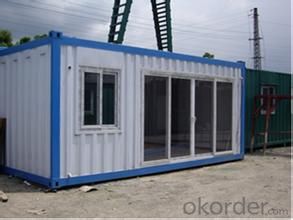
- Q: Can the steel sheets be easily formed into decorative panels?
- Yes, steel sheets can be easily formed into decorative panels. Steel is a versatile material that can be shaped and molded into various forms, including decorative panels. With the right equipment and techniques, steel sheets can be cut, bent, and manipulated to create intricate and unique designs. Additionally, steel is a durable and long-lasting material, making it ideal for decorative panels that require both aesthetic appeal and structural integrity. Whether it's for architectural purposes, interior design, or artistic installations, steel sheets can be easily transformed into visually appealing and functional decorative panels.
- Q: What's the difference between the three kinds of pickling plate, cold rolled plate and hot rolled plate?
- Cold rolled plate: that is, the cold rolled base plate (that is, hot rolled plate) rolled in the normal temperature condition. Because of the great cold rolling stress, it usually goes through the annealing process
- Q: What are the insulation properties of steel sheets?
- Steel sheets have limited insulation properties as they are strong conductors of heat and electricity. However, their high thermal mass allows them to absorb and slowly release heat, which can provide some degree of insulation. To enhance insulation, steel sheets can be combined with other insulating materials or used in conjunction with insulation systems.
- Q: Are steel sheets resistant to graffiti?
- Yes, steel sheets are generally resistant to graffiti due to their smooth and non-porous surface, making it difficult for paint and other substances to adhere. Additionally, steel sheets can be coated with anti-graffiti coatings that further enhance their resistance to graffiti.
- Q: Are steel sheets resistant to impact and vibration?
- Yes, steel sheets are generally highly resistant to impact and vibration due to their strength and rigidity. The properties of steel make it a durable material that can withstand heavy loads and external forces without significant deformation or damage.
- Q: What are the bending and forming capabilities of steel sheets?
- Steel sheets have excellent bending and forming capabilities due to their inherent strength and flexibility. They can be easily bent, shaped, and formed into various complex geometries, making them ideal for applications requiring precise metal fabrication. Additionally, steel sheets can withstand high levels of stress and deformation without compromising their structural integrity, allowing for the creation of durable and reliable products.
- Q: What are the different manufacturing processes for steel sheets?
- There are several manufacturing processes for steel sheets, including hot rolling, cold rolling, and electro-galvanizing. Hot rolling involves heating the steel above its recrystallization temperature and then passing it through rollers to achieve the desired thickness and shape. Cold rolling, on the other hand, involves passing the steel through rollers at room temperature to further refine its thickness and surface finish. Electro-galvanizing is a process where a layer of zinc is electroplated onto the steel sheet to provide corrosion resistance. Other processes such as pickling, annealing, and coating may also be involved in the manufacturing of steel sheets.
- Q: Can steel sheets be used for making furniture?
- Yes, steel sheets can be used for making furniture. Steel is a versatile material that offers several advantages when used for furniture construction. It is known for its strength, durability, and ability to withstand heavy loads. Steel sheets can be shaped, welded, and fabricated into various furniture pieces such as tables, chairs, cabinets, and even bed frames. Additionally, steel furniture tends to be resistant to rust and corrosion, making it suitable for both indoor and outdoor use. The sleek and modern aesthetic of steel also adds a contemporary touch to any space.
- Q: Can steel sheets be used for electrical conductivity applications?
- No, steel sheets are not typically used for electrical conductivity applications. While steel is a good conductor of heat and has some electrical conductivity, it is not as efficient as other materials specifically designed for electrical conductivity, such as copper or aluminum. Steel sheets are commonly used in applications where strength, durability, and corrosion resistance are important, such as construction, automotive manufacturing, and industrial equipment. For electrical conductivity applications, it is more common to use materials with higher conductivity, such as copper or aluminum. These materials have lower resistance and are better suited for conducting electricity efficiently.
- Q: Can steel sheets be recycled into other steel products?
- Yes, steel sheets can be recycled into other steel products. Recycling steel sheets helps conserve natural resources, reduces energy consumption, and minimizes environmental impact by eliminating the need for new steel production.
Send your message to us
Metal Sandwich Panel Container House with Best Quality
- Loading Port:
- Tianjin
- Payment Terms:
- TT or LC
- Min Order Qty:
- 4 set
- Supply Capability:
- 1000 set/month
OKorder Service Pledge
OKorder Financial Service
Similar products
Hot products
Hot Searches
Related keywords
